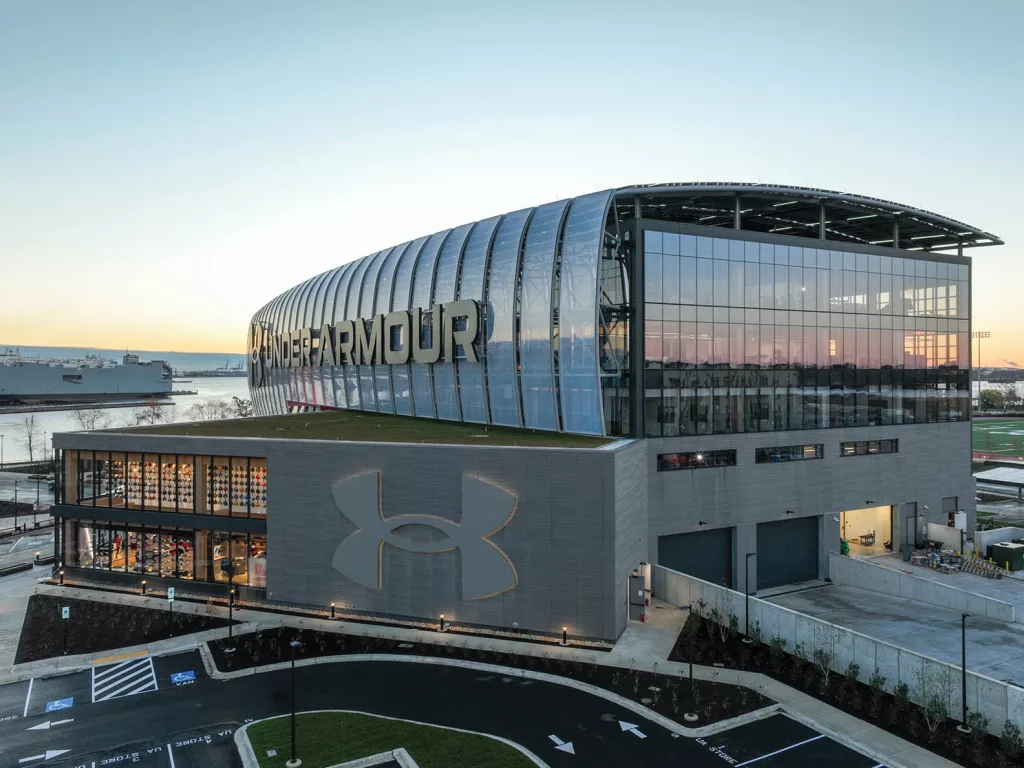Two new reports by architecture firm Gensler and global real estate firm JLL confirm that the future for sustainability looks bright.
Sustainable design will be a driving force of real estate in 2025 according to new reports released by global architecture firm Gensler and global real estate firm JLL. There’s good reason: the built environment contributes 40% of all carbon emissions, compared to 2% from air travel and 15% from cars.
“We’ve talked about sustainability over the years, but this year we feel like innovations in materials and building processes are addressing climate risks and driving value,” Jordan Goldstein, co-CEO of Gensler, told Interior + Sources Magazine. “We believe this focus in 2025 will be a differentiator.”
At least 68% of the 2,300 corporate real estate and business leaders surveyed by JLL anticipate spending more on sustainability performance in the next five years, according to its Future of Work 2024 survey. At least 72% say they will pay a premium to occupy spaces with leading sustainability and green credentials. Corporations are increasingly setting ambitious sustainability targets tied to their real estate footprint.
Gensler is seeing a similar uptick in eco-conscious design. “Wellness and sustainability features are no longer nice-to-haves, and they are driving market values,” writes Gensler in its Design Forecast 2025 report.
Environmentally conscious buildings are commanding top value. Nearly three-quarters of leaders surveyed by JLL said they would only select buildings which are resilient to climate events. Leaders want buildings that are resilient and sustainable, and demand is surging for innovative construction processes and materials.
They’re employing energy-efficient designs and implementing weather-scenario planning while reducing waste and carbon. They’re using sustainable materials, too: Mass timber, low- or no-carbon interior finishes and furnishings, and zero-carbon cement are gaining traction.
Take for instance Under Armour’s new headquarters in Baltimore. An all-electric building, it’s targeting net zero energy and will cut carbon through a timber structure. The high-performance design was to be a physical embodiment of the company’s mission to create high performance products for athletes. The aesthetic includes natural and exposed materials.

—Jeff Jackson
Expect more companies to tout these sustainability achievements in their office branding, telling a story that appeals to customers, suppliers and potential talent, according to Gensler. It will especially appeal to young workers. JLL surveys found that environmentally-friendly workplaces are especially attractive to younger workers. At least 71% of Gen Z and Millennials say “environmental impact” is one of their top drivers influencing consumer choice.
“Sustainability and storytelling should be woven into the brand narrative as a given, shaping spaces that are not just beautiful but also meaningful and responsible,” says Diane Thorsen, Gensler design director and global leader of its hospitality practice.
So what are other companies doing to drive sustainable workplaces?
Retrofitting buildings
In particular, JLL is seeing a surge in more buildings being retrofitted and converted with sustainable features. The trend is driven by a glut of aging buildings, office supply shortages across sectors and in-demand locations, and increased ESG requirements.
JLL has declared that we are at “the green tipping point,” when investments in low-carbon buildings begin to pay off because the “flight to quality” now encompasses energy performance and sustainability.
“This shift is creating both urgency and opportunity for investors who seize this moment and can communicate measurable progress around a building’s carbon performance,” writes JLL in its report, The Green Tipping Point.
Reusing and recycling furniture
It’s not just about energy efficiency. Organizations are embracing the idea of reusing and recycling furniture whenever possible too, according to JLL.
The U.S. Environmental Protection Agency estimates that 17 billion pounds of office assets are dumped in U.S. landfills each year. Yet more companies are starting to change their ways.
In 2023, 56 out of the Fortune 100 companies mentioned circular economy practices—such as repurposing, donating, or reselling office furniture—in their sustainability reports. That was up from 50 the previous year.
—Aectual
Some companies are taking steps to cut that waste by turning recycled cartons into office furniture. Dutch packaging company Tetrapak and Aectual have designed and created stools, planters, wall panels and room dividers using 3D-printing and PolyAl, a material made from polymers and aluminum recovered from recycled cartons.
Science-led Design
“Science-led design” is also playing a huge role in sustainability efforts. The practice relies on research and data to come up with creative solutions for improving how a building might perform or how it might better impact people or the planet.
It’s fueling innovation like textiles and carpet made from algae, which cuts down the use of water and chemicals, and living roofs, which use insights from climate science, hydrology and ecology to save water and energy.
—Recovergreenroofs.com
New standards for materials
Interior materials can make a big difference in sustainability—they can actually have a bigger carbon impact over the life of a building than construction materials like steel and concrete can.
“If we want to create low-carbon buildings… we have to look for opportunities to decrease carbon in multiple ways, whether that’s how we operate a building, how we construct it, and what we put inside it,” says Goldstein of Gensler.
In 2023, the firm created its own Gensler Product Sustainability Standards to create a baseline threshold for materials and finishes to be used in projects at its 57 global offices.
The hope, says Goldstein, is that it creates a ripple effect through the industry—prompting manufacturers, vendors and distributors to align with this thinking. Gensler is trying to change the industry, he says, by changing how professionals think about the process for projects.
“There’s an urgency of now,” says Goldstein. “Now’s the time to take bold steps.”
